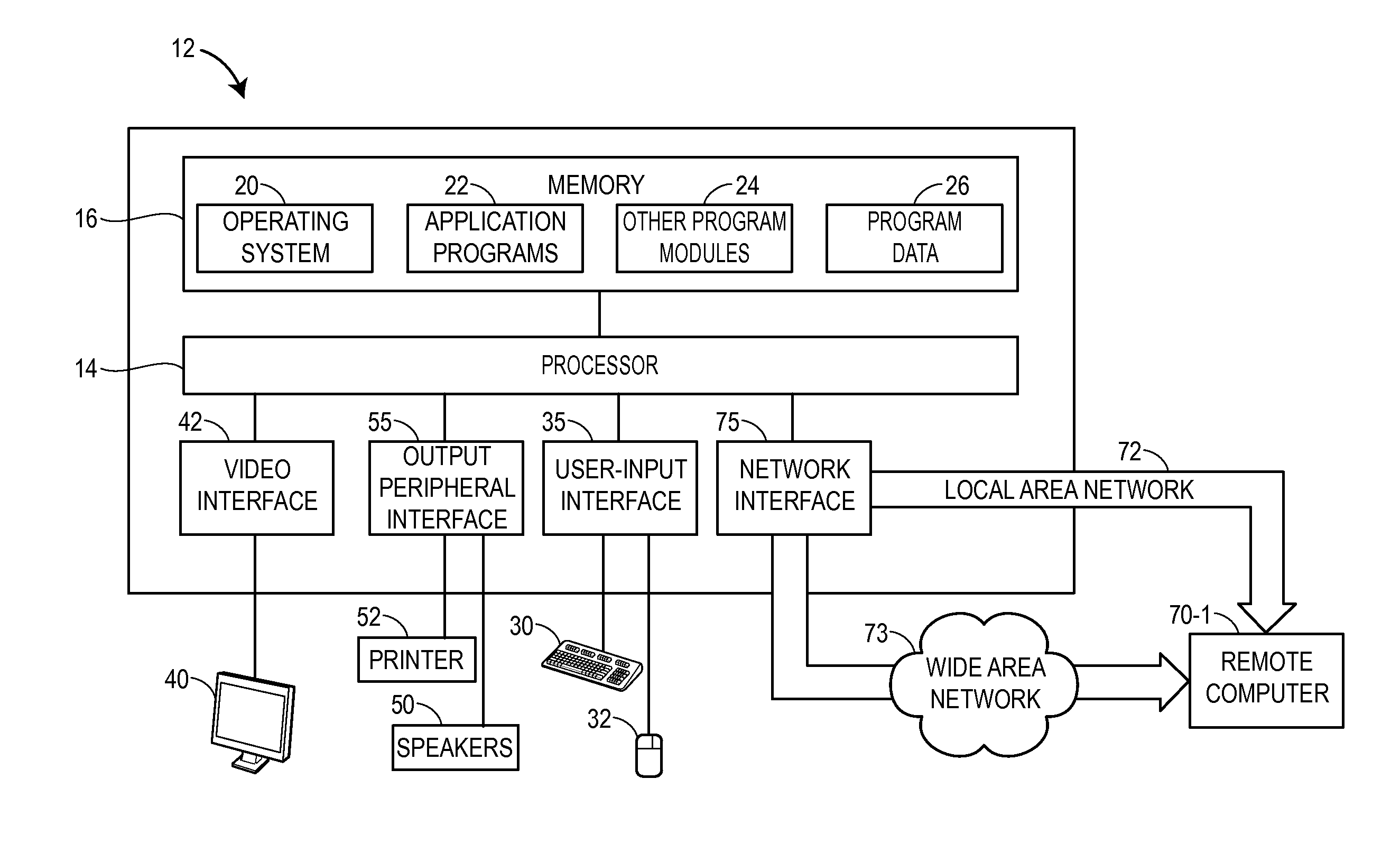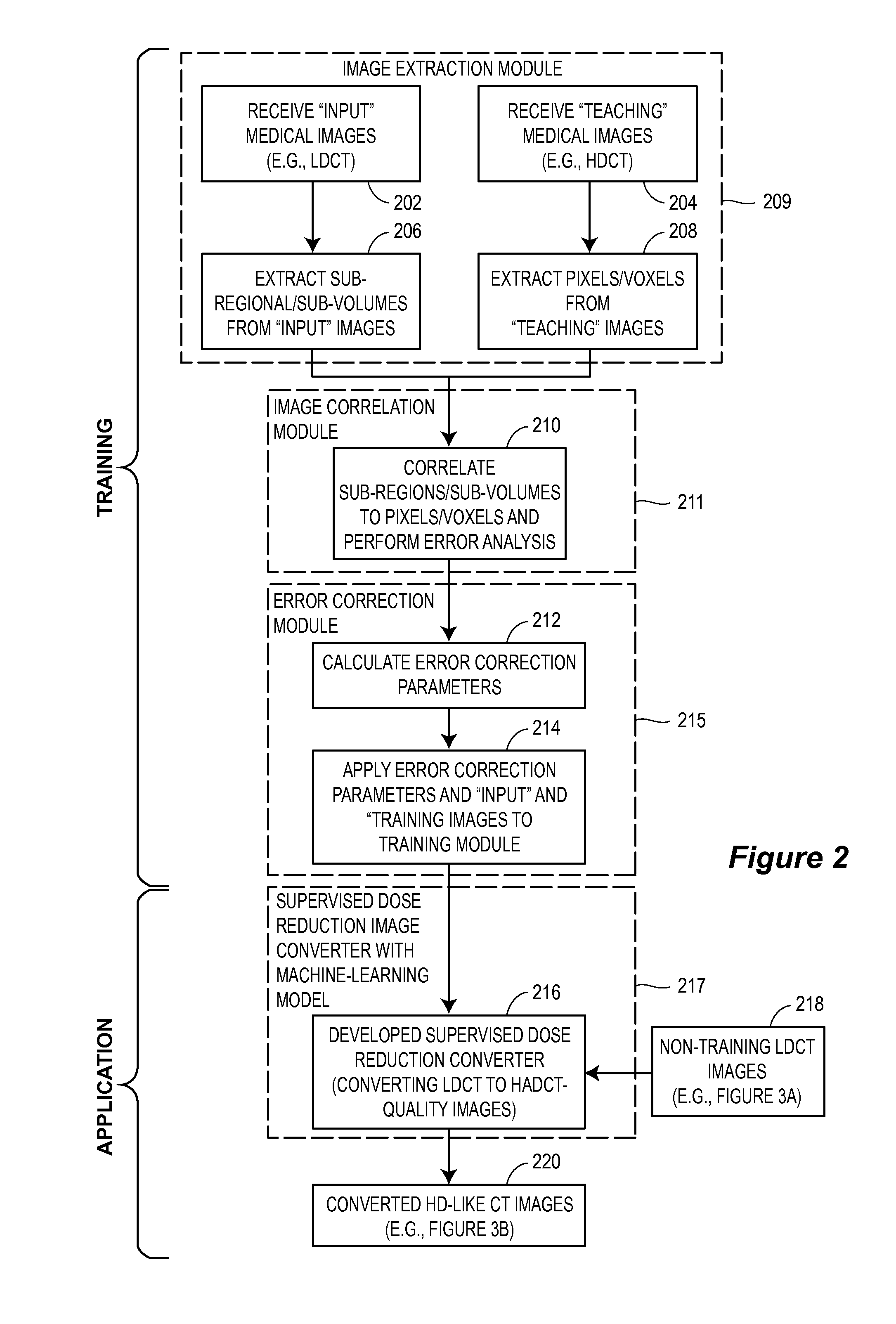Supervised machine learning technique for reduction of radiation dose in computed tomography imaging
- Summary
- Abstract
- Description
- Claims
- Application Information
AI Technical Summary
Benefits of technology
Problems solved by technology
Method used
Image
Examples
Embodiment Construction
[0014]A schematic diagram of example training and application for a supervised dose reduction technique 100 is shown in FIG. 1. The supervised dose reduction technique developed herein is able to produce high-quality medical images from lower-quality medical images through the use of a training phase, that once completed can be used repeatedly on follow-up images for automatically converting lower-quality images to high-quality images. As discussed herein, various supervised machine learning techniques may be used to form the image conversion engines described herein. While the image conversion engines may be designed to effect image conversion from a low-quality image to a higher-quality image based on any number of image characteristics, as provided herein, in some examples, the conversion engine is particularly configured to reduce noise in the lower-quality image and preserve and enhance signal (such as edge and lesion) pixel depictions in the final, converted image. By altering...
PUM
 Login to View More
Login to View More Abstract
Description
Claims
Application Information
 Login to View More
Login to View More - R&D
- Intellectual Property
- Life Sciences
- Materials
- Tech Scout
- Unparalleled Data Quality
- Higher Quality Content
- 60% Fewer Hallucinations
Browse by: Latest US Patents, China's latest patents, Technical Efficacy Thesaurus, Application Domain, Technology Topic, Popular Technical Reports.
© 2025 PatSnap. All rights reserved.Legal|Privacy policy|Modern Slavery Act Transparency Statement|Sitemap|About US| Contact US: help@patsnap.com



